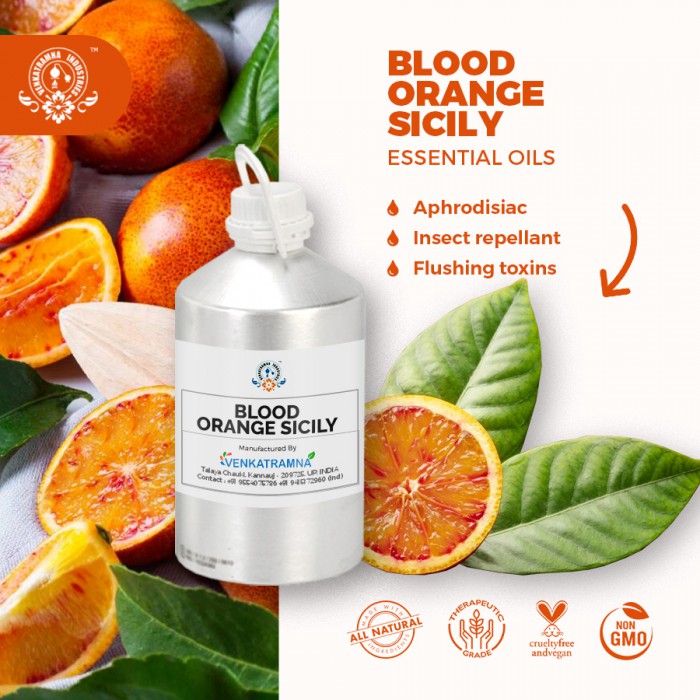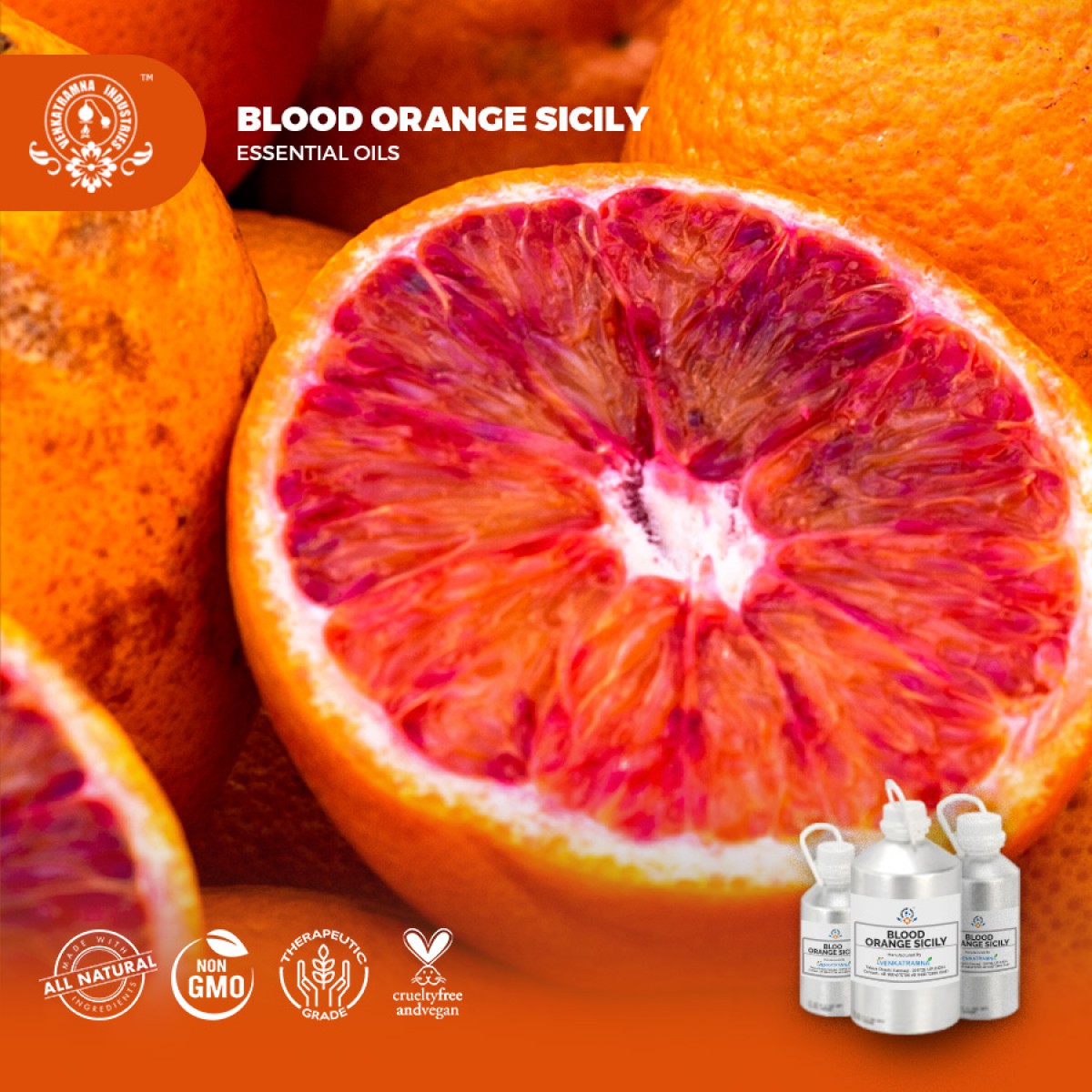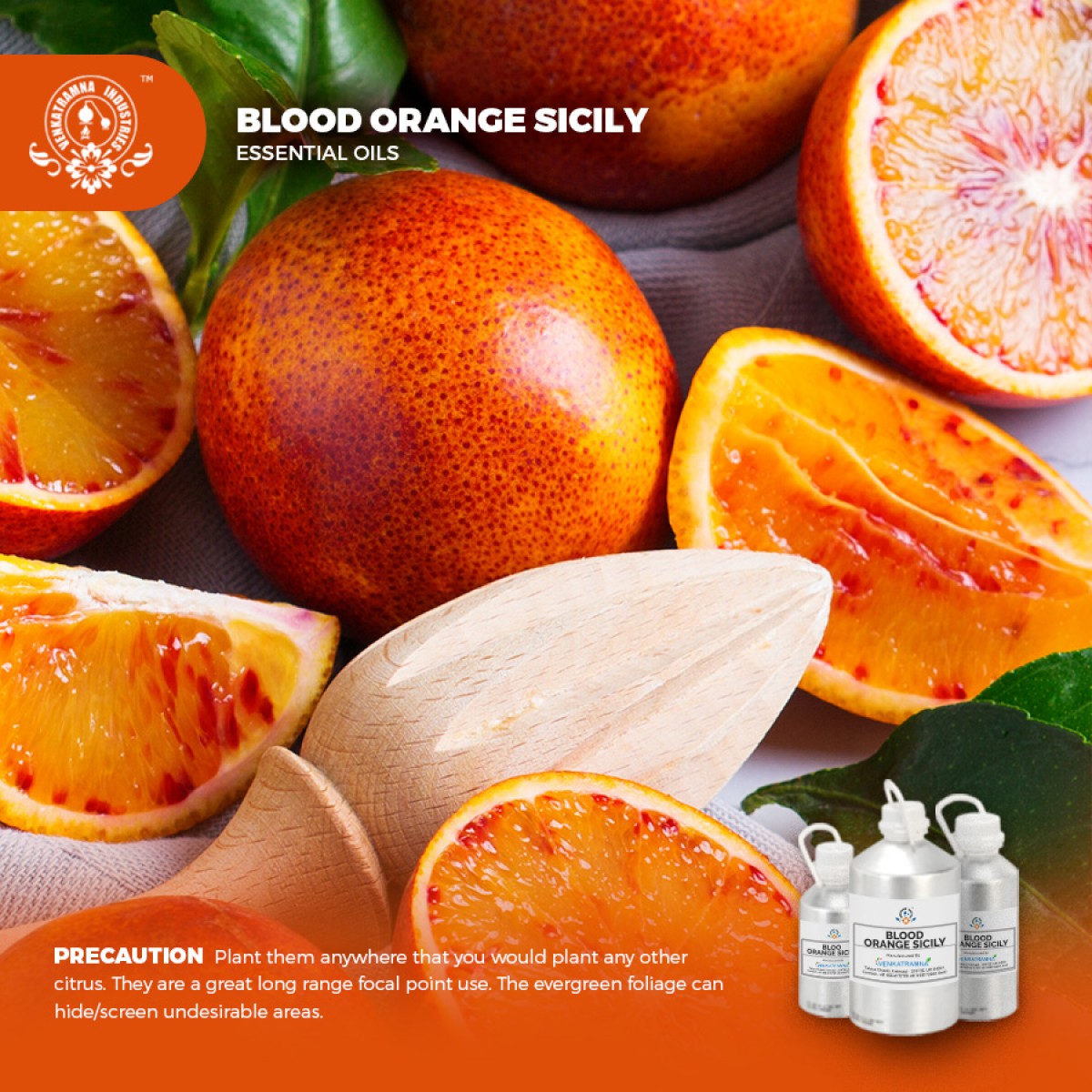Botanical Name: Citrus sinensis Common name: Sweet orange, Navel Orange Read More
|
Botanical Name: |
Citrus sinensis |
|
Common name: |
Sweet orange, Navel Orange |
|
Plant family: |
Rutaceae |
|
Genus: |
Citrus |
|
Appearance/Color: |
A light, oily orange to reddish-orange liquid. |
|
Odor: |
Oil has a worm, fresh citrus scent that is tangy. It is a middle
note of medium aroma |
|
Blends With: |
Lavender, clary sage, lemon, Mrryh, nutmeg, clove bud. |
|
Origin |
Italy |
Orange (Citrus sinensis) is a
citrus fruit and a hybrid of pomelo and mandarin orange. Relative ratio of
sugar and acid determines the taste of the orange and the aroma is governed by
volatile organic compounds like alcohols, ketones, terpenes, esters, etc.
Orange juice is pulpy in nature with a pH of 2.9–4. Orange is a rich source of
vitamin C along with potassium, carotenoids, flavonoids, and other phytoactive
compounds. However, like most of the citrus juices orange contains a huge
amount of pectin (Qaid et al., 2017). Hence, orange being a highly pectinous
fruit is usually depectinized prior to MSP.
Oranges can be used in many ways
and almost all parts of it, including the peel, can be used. But most often
they are consumed without peel, fresh or in the form of juice.
It is a middle-sized evergreen tree, covered with bark of a greenish-brown color, having auxiliary spines on the branches. The leaves are alternate, ovate-oblong, acute, shining green, the stalk winged. The blood orange has streaks of red in the fruit, and when squeezed the juice is often reddish. Its red pigment, anthocyanin, is an antioxidant that in rear in the rest of the citrus family. A recently hybridized orange, it was cultivated in china and the southern Mediterranean in the early 18th century. The tree which are widely cultivated today are the Moro, Toracco, and sanguinello.
DISCLAIMER
The complete range of conditions
or methods of use are beyond our control therefore we do not assume any
responsibility and expressly disclaim any liability for any use of this
product. Information contained herein is believed to be true and accurate however,
all statements or suggestions are made without warranty, expressed or implied,
regarding accuracy of the information, the hazards connected with the use of
the material or the results to be obtained from the use thereof. Compliance
with all applicable federal, state, and local laws and local regulations
remains the responsibility of the user.
The FDA has not evaluated the
statements on this website. No claims are made by Venkatramna Industries as to
the medicinal value of any products from vriaroma.com or by us. The information
presented here is for educating our customers about the traditional uses of
essential oils and is not intended to diagnose, treat, cure, or prevent any
disease. You are responsible for understanding the safe application of these products.
If you have any questions, please call or email us for further information.
As per NAHA guidelines, New Directions Aromatics
(NDA) does not recommend the ingestion of essential oils. It is imperative to
consult a medical practitioner before using Essential Oils for therapeutic
purposes. Pregnant and nursing women and those taking prescription drugs are
especially advised not to use this product without the medical advice of a
physician. The oil should always be stored in an area that is inaccessible to
children, especially those under the age of 7.
C. sinensis is consumed all over the world as an excellent source
of vitamin C, which is a powerful natural antioxidant that builds the body’s
immune system. It has been used traditionally to treat ailments like
constipation, cramps, colic, diarrhea, bronchitis, tuberculosis, cough, cold,
obesity, menstrual disorder, angina, hypertension, anxiety, depression and
stress.
Blood Orange Sicily Oil in
Pharma
It has several pharmacological
effects including antioxidant, cardioprotective, anti-proliferative,
anticancer, and hypolipidemic activities. In folk medicine, products derived
from the peel and/or whole dried immature fruit of orange plants have been used
to treat several health problems such as gastrointestinal disturbances,
respiratory disorders as agent for cough, insomnia, stress disorders, epilepsy,
and anxiety. C. sinensis is a rich source of vitamin C, a natural antioxidant that
support the immune system activity.
Essence of Blood Orange Sicily
Oil
It is used for food, fragrance,
and medical application. Fruit, peel, leaves, flowers, seeds, and essential oil
(EO) are used in perfumes and cosmetics, as well as in the food and
confectionery industry. Bitter orange oil, obtained from the pressure of the
fresh peels, is widely used as a flavoring agent in the food industry and for
beverages, particularly liqueurs and soft drinks.
COMMON USAGE
·
Aphrodisiac
·
Insect repellant
·
Gas
·
Spasms
·
Flushing toxins
·
For the mind
·
Cholagogue
·
Cuts and wounds
·
For inflammation
Ingredients:
|
S.No |
Key Constituents |
Strength (%) |
|
1 |
a-pinene |
1 |
|
2 |
b-pinene |
1 |
|
3 |
myrcene |
1.0-2.50 |
|
4 |
Limonene |
50-100 |
Other Ingredients: linalool,
citronella, a-pinene, b-pinene, myrcene, sabinene.
Allergens: contains
fragrance allergens
TOXICOLOGICAL
INFORMATION
Safety Summary
·
Hazardous: May cause Skin irritation
·
Contraindications Not Known
Systemic Effects
·
Acute toxicity (human) 1,8-cineole has
been reported to cause serious poisoning in young children when accidentally
instilled into the nose.
·
Acute toxicity (animal) cajuput oil acute
oral LD50 in rats 3.87 g/kg; acute dermal LD50 in rabbits>5 g/kg.
·
Carcinogenic/ anticarcinogenic: potential
no information found. 1,8-cineole is non-mutagenic and slows no evidence of
carcinogenesis.
·
Skin corrosion/irritation: May cause sensitization by skin
contact.
·
Serious eye damage/irritation: Spray and vapour in the eyes may
cause irritation and smarting.
·
Respiratory sensitization: In high concentrations, vapours may
irritate throat and respiratory system and cause coughing.
·
Reproductive toxicity: Not specified
·
STOT-single exposure: Not specified
·
STOT-related exposure: Not specified
·
Interactive effects Not specified
·
Aspiration Hazard: No Data Available
ECOLOGICAL
INFORMATION
·
Toxic
to aquatic organisms, may cause long term adverse effects in the aquatic
environment.
·
Results of PBT and vPvB assessment
o
PBT: Not applicable.
o
vPvB: Not applicable.
·
Persistence and degradability No further
relevant information available.
·
Bio-accumulative potential No further relevant
information available.
·
Mobility in soil No further relevant information
available.





 MSDS-Blood_Orange.pdf
MSDS-Blood_Orange.pdf




